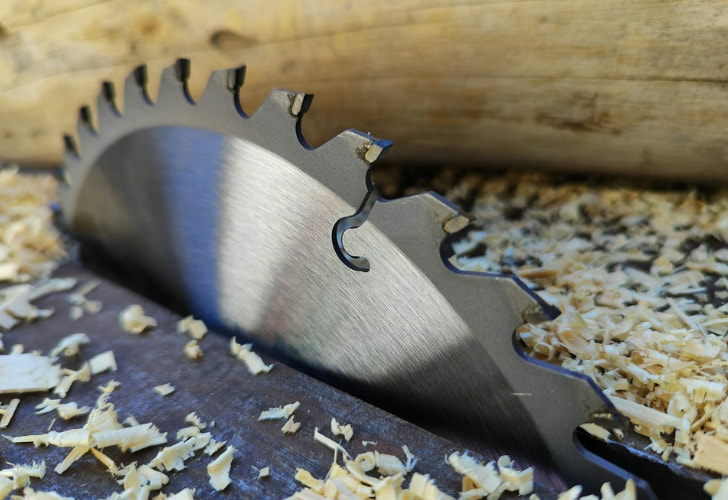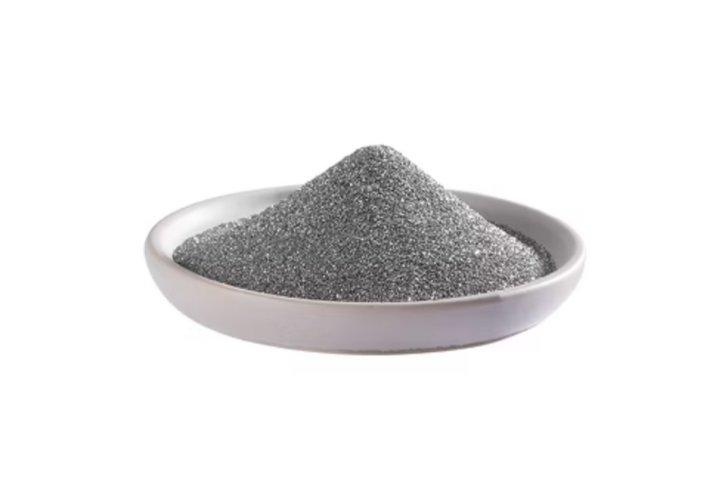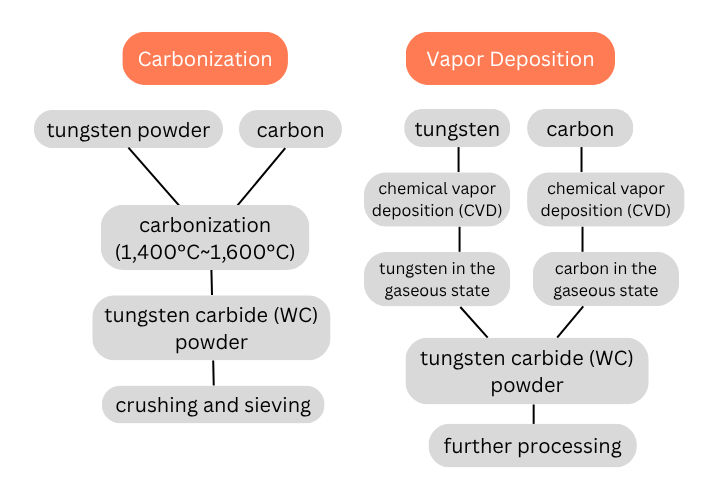As someone who has worked in a tungsten carbide tooling company for over five years, I can honestly say “tungsten carbide” is the one phrase I hear more than any other, because it’s literally everywhere in my daily life. Known for its exceptional hardness and outstanding wear resistance, tungsten carbide is found in everything from drill bits and saw blades to wedding rings and snowmobile runners. It delivers reliable performance where many other materials fall short, especially in high-pressure or high-friction applications.

(Image Source: unsplash.com)
But what is tungsten carbide, exactly? How is it made? And why is it preferred over materials like steel, titanium, or ceramics in so many industries? Scroll down to discover the answers.
What Is Tungsten Carbide?
Strictly speaking, tungsten carbide, also called “carbide,” is a chemical compound composed of tungsten and carbon, with the chemical formula “WC” and the appearance of fine grey powder. Tungsten carbide is chemically stable.

(Image Source: kennametal.com)
It is incredibly hard, almost as hard as diamond, with a Mohs hardness of 9.0–9.5 and a Vickers hardness of around 2600 HV. That’s why it excels in resisting wear and tear.
Tungsten carbide is insoluble in water, hydrochloric acid, and sulfuric acid, but easily dissolves in a mixture of nitric acid and hydrofluoric acid.
Pure tungsten carbide is brittle, but adding small amounts of metals such as titanium or cobalt can reduce its brittleness.
It conducts electricity surprisingly well, with a resistivity of just 0.2 micro-ohm meters, similar to metals like vanadium. That makes it useful as a conductive material in some situations.
Tungsten carbide has an extremely high melting point of around 2780°C, and under standard atmospheric pressure, its boiling point reaches up to 6000°C.
Tungsten carbide powder is widely used as a raw material in the production of cemented tungsten carbides.
However, when we talk about “tungsten carbide” or “carbide”, we’re usually referring to the cemented tungsten carbide, a mixture of WC powder and a binder like cobalt, rather than pure WC powder. This is more of a commonly accepted convention than a strict definition.
How Is Tungsten Carbide (WC) Powder Made?
There are two main methods used to produce tungsten carbide (WC) powder: carburization and vapor deposition. Each method has its own advantages and is chosen based on the desired powder characteristics and production scale.

Carbonization Method
This is the most commonly used and industrially mature method. It is widely adopted due to its simplicity and suitability for large-scale production. However, strict control of temperature, time, and atmosphere is crucial to ensure consistent quality. This method involves the following steps:
Raw Material Preparation: Fine tungsten metal powder is mixed with a carbon source such as carbon black or graphite.
Carbonization Reaction: The mixture is placed in a carbonization furnace, where it undergoes a high-temperature reaction (usually between 1,400°C and 1,600°C). During this step, tungsten reacts with carbon to form tungsten carbide.
Crushing and Sieving: After the reaction, the resulting material is crushed and sieved to obtain the desired powder particle size.
Vapor Deposition Method
This more advanced technique is used when high purity and fine particle size are required, and it involves more complex equipment and higher costs.
Raw Material Preparation: Tungsten and carbon are converted into gaseous state using techniques such as chemical vapor deposition (CVD) or thermal evaporation under controlled conditions.
Gas-Phase Reaction: The tungsten and carbon (in the gaseous state) produce chemical reaction to form tungsten carbide particles.
Collection and Processing: The generated WC powder is collected and further processed to meet product requirements.
Cemented Tungsten Carbide
To be honest, I used to be quite confused about the difference between cemented carbide and tungsten carbide. I thought they were the same thing. But I was wrong. As I mentioned earlier, tungsten carbide is a raw material for manufacturing cemented tungsten carbide, or cemented carbide.
Once the WC powder is prepared, it’s mixed with a metal binder, most commonly cobalt (Co), though nickel (Ni) or iron (Fe) can also be used in certain applications. The binder plays a crucial role in holding the hard carbide particles together, adding toughness to the material.
The WC–binder powder mixture is then pressed into desired shapes, such as tool blanks, inserts, or dies, and undergoes a process called sintering. (Yes, this step is absolutely crucial!) The main purpose of sintering is to use cobalt as a binder to improve the toughness of the material and enhance its overall performance. During sintering, the compacted material is heated to temperatures between 1,400 and 1,600°C, often in a vacuum furnace. At these temperatures, the metal binder melts, partially dissolves the WC particles, and causes them to fuse tightly together. This results in a dense, solid piece of cemented carbide, ready for finishing and shaping.
Applications of Tungsten Carbide
Tungsten carbide is widely used across multiple industries thanks to its exceptional hardness, wear resistance, and ability to maintain performance under extreme conditions. Here are some of its most common and practical applications:
Cutting Tools: One of the most significant applications of tungsten carbide is in the manufacturing of cutting tools for woodworking and metalworking. Cemented carbide tools, especially those made from tungsten carbide and cobalt, are much harder and more wear-resistant than traditional high-speed steel (HSS). Due to their superior hardness, they maintain a sharp edge longer, provide a smoother finish, and allow for much faster cutting speeds, improving overall efficiency.
Converting: Cemented tungsten carbide is ideal for slitting blades and knives used in the converting industry, such as slotted blades, three-hole razor blades, and fabric slitting blades.
Mining and Construction: You’ll find tungsten carbide in road milling machines, foundation drills, and DTH bits. It’s typically used as button inserts set in a steel matrix. These carbide-tipped tools can last up to 10 times longer than conventional options, cutting down on maintenance and downtime.
Oil and Gas: Tungsten carbide is widely used for hardfacing,a welding process that improves tool life in harsh drilling environments. It’s also a key material in making PDC bits, essential tools for downhole operations.
Wear Parts: Due to its durability, tungsten carbide is commonly used in a wide range of wear-resistant components, including: seal rings and bushings, industrial dies and punches, VSI crusher rotor tips, and decanter centrifuge tiles. These parts are often made of straight WC-Co hardmetals, offering a great balance of toughness and hardness for challenging industrial environments.
Forestry: Tungsten carbide is widely used to enhance the durability and performance of cutting and grinding tools. Whether it’s for wood chippers, stump grinders, saw teeth, debarking tools, or mulching blades, tungsten carbide-tipped components offer exceptional wear resistance, impact strength, and cutting precision, even in harsh, abrasive environments.
Sports and Outdoor Equipment: From snowmobile studs and studded tires to roller ski tips and trekking poles, tungsten carbide is used wherever outdoor equipment needs long-lasting traction and abrasion resistance.
Recycling: Shredder blades made with tungsten carbide are common in the recycling industry. These blades handle harsh materials like scrap metal, rubber, and plastic with ease, maintaining sharpness and strength over extended use.
Jewelry and Fashion Accessories: Tungsten carbide is a popular choice for wedding bands and rings due to its extreme hardness, about 10 times harder than 18k gold, along with its scratch resistance and sleek, modern look. Though tough, it can shatter under strong impact, which some consider a safety feature in emergencies.
FAQs about Tungsten Carbide
Q1: What makes tungsten carbide so hard?
Tungsten carbide has a unique crystal structure that gives it extreme hardness, ranking around 9.0–9.5 on the Mohs scale. This hardness is close to that of diamond and significantly higher than most metals, including steel.
Q2: Can tungsten carbide rust or corrode?
Tungsten carbide is highly resistant to corrosion and oxidation. However, it can be vulnerable to certain chemicals, like a mixture of nitric acid and hydrofluoric acid, especially at higher temperatures.
Q3: Is tungsten carbide magnetic?
Pure tungsten carbide is not magnetic, but cemented carbide grades containing cobalt as a binder may exhibit slight magnetism due to the cobalt content.
Q4: Can tungsten carbide be sharpened?
Yes, but only with extremely hard abrasives, typically diamond wheels or cubic boron nitride (CBN) tools.
Q5: Can tungsten carbide break or shatter?
Yes. While extremely hard, tungsten carbide is also quite brittle compared to softer metals. Under high impact or sudden stress (like dropping a ring onto a hard floor), it can crack or shatter.
Q6: Is tungsten carbide safe for jewelry?
Yes. Tungsten carbide used in jewelry is non-toxic and hypoallergenic for most people. However, if someone has a sensitivity to cobalt (sometimes used as a binder), nickel-bonded alternatives may be safer.
Q7: How sustainable is tungsten carbide?
Tungsten carbide is recyclable, and many manufacturers now reclaim used carbide tools to recover valuable tungsten. This not only conserves resources but also reduces environmental impact.
*All of the above images are not intended for commercial use.
